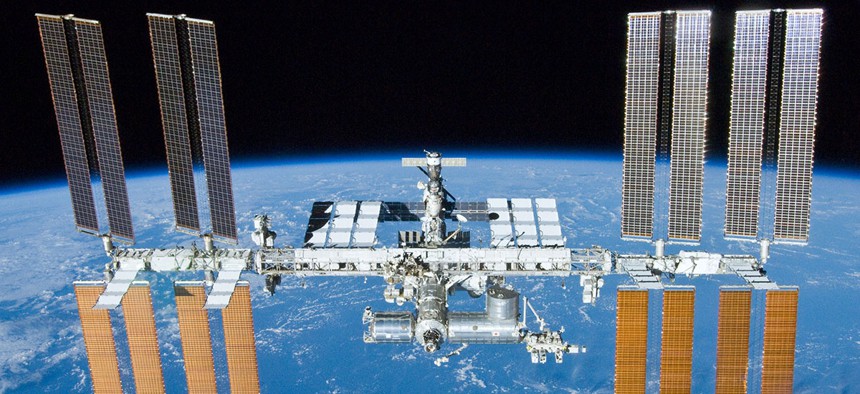Internet in Space Is About as Slow as Dial-Up

NASA
Mankind put a human being on the moon in 1969. In 2016, you can easily watch compelling footage of the space adventure online … that is, unless you’re actually in space.
Mankind put a human being on the moon in 1969. In 2016, you can easily watch compelling footage of the space adventure online … that is, unless you’re actually in space, in which case you might be buffering for a while.
This is because, for as far as humans have come technologically, the Internet connection in space is still pretty unreliable, according to two astronauts who spent time (some of it surfing the net, slowly) on the International Space Station before recently retiring.
“To get on the Internet would be a long process,” astronaut Steve “Swanny” Swanson told Quartz. “When you start to log on, it would take probably three times to get on and for it to work.”
And then it would crash after a few minutes.
In the words of another retired astronaut, Mike Hopkins: “It’s probably not as bad as dial-up, but it’s certainly not what most of us are used to at this time.”
NASA first made the Internet available to astronauts in January 2010, an announcement that was quickly followed by the first tweet from space. It provided astronauts another way to connect with family and friends on Earth during their months-long missions by allowing them log onto websites, such as Facebook, or make high-flying purchases of holiday and birthday gifts, or little mementos to remind people they were thinking of them.
But delivering the Internet (or “Crew Support LAN” in NASA parlance) into space is a complicated, ping-pong process, Swanson explained. Each request to log on from the International Space Station first bounces off a satellite to a government facility in White Sands, New Mexico and then travels by ground wire to a remotely-connected computer in Houston, Texas.
NASA once considered partnering with Amazon to make online shopping from space easier, according to Brad Stone’s book on the company, "The Everything Store." Such a partnership might have been natural, given Amazon CEO Jeff Bezos’ interest in space, as evidenced by his space rocket company, Blue Origin. But NASA wound up deciding the move would be too corporate, according to Stone.
That’s left the International Space Station with a shaky Internet connection (and perhaps some celestial market share for another company to snap up).
Swanson and Hopkins have collectively logged hundreds of hours in space—both served out their final missions in 2014—and said that they appreciated having a digital connection to their families and friends, even if it was weak.
Enabling this kind of connection is a focus for Kelly Curtis and Jessica Hughlett, who work for the Houston-based government contractor Behavioral Health and Performance Group as go-betweens for astronauts and their families, supporting them in many ways, including arranging the delivery of gifts.
“Some crew members want to do it all on their own, some crew members want the help,” Curtis said.
Curtis and Hughlett confirmed that the Internet is still “pretty cumbersome for the crew to use,” at this stage. Both believe connectivity while in orbit will improve in the future and that astronauts will grow more autonomous. Until then, the astronauts said they appreciate their help—especially while they are still being routinely booted offline.
Of course, even with a perfect Internet connection there will still be some things astronauts will always have trouble accessing. When NASA announced it was bringing the World Wide Web to space, it also set out its restrictions, stating that: “Astronauts will be subject to the same computer use guidelines as government employees on Earth.”
That means there is a whole world of websites out there—yes, including those—that are restricted.
Not that it appears to matter, buffering and all.
“You don’t think about it until you’re up there for a while….” Swanson said, adding a dramatic pause.
It’s true. When astronauts agree to be rocketed into space, they sign up for months away from their partners back on Earth. Swanson himself logged 195 days, 15 hours and 41 minutes over two trips to space. The Internet will probably speed up for space travelers before NASA’s policy changes. Until that day comes, space explorers will have to deal with slow connections, and for other entertainment, Swanson’s suggested substitute: Sports Illustrated.





